-
EXECUTIVE SUMMARY
-
\r\n
-
Market Overview
-
\r\n
-
Key Findings
-
\r\n
-
Market Segmentation
-
\r\n
-
Competitive Landscape
-
\r\n
-
Challenges and Opportunities
-
\r\n
-
Future Outlook
-
\r\n
-
MARKET INTRODUCTION
-
\r\n
-
Definition
-
\r\n
-
Scope of the study
- Research Objective
- Assumption
- Limitations
-
\r\n
-
\r\n
-
\r\n
-
\r\n
-
RESEARCH METHODOLOGY
-
\r\n
-
Overview
-
\r\n
-
Data Mining
-
\r\n
-
Secondary Research
-
\r\n
-
Primary Research
- Primary Interviews and Information Gathering Process
- Breakdown of Primary Respondents
-
\r\n
-
\r\n
-
\r\n
-
Forecasting Model
-
\r\n
-
Market Size Estimation
- Bottom-Up Approach
- Top-Down Approach
-
\r\n
-
\r\n
-
\r\n
-
Data Triangulation
-
\r\n
-
Validation
-
\r\n
-
MARKET DYNAMICS
-
\r\n
-
Overview
-
\r\n
-
Drivers
-
\r\n
-
Restraints
-
\r\n
-
Opportunities
-
\r\n
-
MARKET FACTOR ANALYSIS
-
\r\n
-
Value chain Analysis
-
\r\n
-
Porter's Five Forces Analysis
- Bargaining Power of Suppliers
- Bargaining Power of Buyers
- Threat of New Entrants
- Threat of Substitutes
- Intensity of Rivalry
-
\r\n
-
\r\n
-
\r\n
-
\r\n
-
\r\n
-
\r\n
-
COVID-19 Impact Analysis
- Market Impact Analysis
- Regional Impact
- Opportunity and Threat Analysis
-
\r\n
-
\r\n
-
\r\n
-
\r\n
-
FEED PRESERVATIVES MARKET, BY TYPE (USD BILLION)
-
\r\n
-
Natural Feed Preservatives
-
\r\n
-
Chemical Feed Preservatives
-
\r\n
-
Probiotic Feed Preservatives
-
\r\n
-
Fermentation Feed Preservatives
-
\r\n
-
FEED PRESERVATIVES MARKET, BY APPLICATION (USD BILLION)
-
\r\n
-
Ruminants
-
\r\n
-
Poultry
-
\r\n
-
Swine
-
\r\n
-
Aquaculture
-
\r\n
-
FEED PRESERVATIVES MARKET, BY FORM (USD BILLION)
-
\r\n
-
Liquid
-
\r\n
-
Powder
-
\r\n
-
Granular
-
\r\n
-
FEED PRESERVATIVES MARKET, BY END USER (USD BILLION)
-
\r\n
-
Feed Manufacturers
-
\r\n
-
Livestock Farmers
-
\r\n
-
Pet Food Manufacturers
-
\r\n
-
Aquaculture Producers
-
\r\n
-
FEED PRESERVATIVES MARKET, BY REGIONAL (USD BILLION)
-
\r\n
-
North America
- US
- Canada
-
\r\n
-
\r\n
-
\r\n
-
Europe
- Germany
- UK
- France
- Russia
- Italy
- Spain
- Rest of Europe
-
\r\n
-
\r\n
-
\r\n
-
\r\n
-
\r\n
-
\r\n
-
\r\n
-
\r\n
-
APAC
- China
- India
- Japan
- South Korea
- Malaysia
- Thailand
- Indonesia
- Rest of APAC
-
\r\n
-
\r\n
-
\r\n
-
\r\n
-
\r\n
-
\r\n
-
\r\n
-
\r\n
-
\r\n
-
South America
- Brazil
- Mexico
- Argentina
- Rest of South America
-
\r\n
-
\r\n
-
\r\n
-
\r\n
-
\r\n
-
MEA
- GCC Countries
- South Africa
- Rest of MEA
-
\r\n
-
\r\n
-
\r\n
-
\r\n
-
COMPETITIVE LANDSCAPE
-
\r\n
-
Overview
-
\r\n
-
Competitive Analysis
-
\r\n
-
Market share Analysis
-
\r\n
-
Major Growth Strategy in the Feed Preservatives Market
-
\r\n
-
Competitive Benchmarking
-
\r\n
-
Leading Players in Terms of Number of Developments in the Feed Preservatives Market
-
\r\n
-
Key developments and growth strategies
- New Product Launch/Service Deployment
- Merger & Acquisitions
- Joint Ventures
-
\r\n
-
\r\n
-
\r\n
-
\r\n
-
Major Players Financial Matrix
- Sales and Operating Income
- Major Players R&D Expenditure. 2023
-
\r\n
-
\r\n
-
\r\n
-
COMPANY PROFILES
-
\r\n
-
DSM
- Financial Overview
- Products Offered
- Key Developments
- SWOT Analysis
- Key Strategies
-
\r\n
-
\r\n
-
\r\n
-
\r\n
-
\r\n
-
\r\n
-
Nutreco
- Financial Overview
- Products Offered
- Key Developments
- SWOT Analysis
- Key Strategies
-
\r\n
-
\r\n
-
\r\n
-
\r\n
-
\r\n
-
\r\n
-
Addcon
- Financial Overview
- Products Offered
- Key Developments
- SWOT Analysis
- Key Strategies
-
\r\n
-
\r\n
-
\r\n
-
\r\n
-
\r\n
-
\r\n
-
Cargill
- Financial Overview
- Products Offered
- Key Developments
- SWOT Analysis
- Key Strategies
-
\r\n
-
\r\n
-
\r\n
-
\r\n
-
\r\n
-
\r\n
-
Selko Feed Preservatives
- Financial Overview
- Products Offered
- Key Developments
- SWOT Analysis
- Key Strategies
-
\r\n
-
\r\n
-
\r\n
-
\r\n
-
\r\n
-
\r\n
-
Kemin Industries
- Financial Overview
- Products Offered
- Key Developments
- SWOT Analysis
- Key Strategies
-
\r\n
-
\r\n
-
\r\n
-
\r\n
-
\r\n
-
\r\n
-
Impextraco
- Financial Overview
- Products Offered
- Key Developments
- SWOT Analysis
- Key Strategies
-
\r\n
-
\r\n
-
\r\n
-
\r\n
-
\r\n
-
\r\n
-
Alltech
- Financial Overview
- Products Offered
- Key Developments
- SWOT Analysis
- Key Strategies
-
\r\n
-
\r\n
-
\r\n
-
\r\n
-
\r\n
-
\r\n
-
Pinnacle Agriculture Distribution
- Financial Overview
- Products Offered
- Key Developments
- SWOT Analysis
- Key Strategies
-
\r\n
-
\r\n
-
\r\n
-
\r\n
-
\r\n
-
\r\n
-
Pancosma
- Financial Overview
- Products Offered
- Key Developments
- SWOT Analysis
- Key Strategies
-
\r\n
-
\r\n
-
\r\n
-
\r\n
-
\r\n
-
\r\n
-
Novozymes
- Financial Overview
- Products Offered
- Key Developments
- SWOT Analysis
- Key Strategies
-
\r\n
-
\r\n
-
\r\n
-
\r\n
-
\r\n
-
\r\n
-
Church and Dwight
- Financial Overview
- Products Offered
- Key Developments
- SWOT Analysis
- Key Strategies
-
\r\n
-
\r\n
-
\r\n
-
\r\n
-
\r\n
-
\r\n
-
Evonik Industries
- Financial Overview
- Products Offered
- Key Developments
- SWOT Analysis
- Key Strategies
-
\r\n
-
\r\n
-
\r\n
-
\r\n
-
\r\n
-
\r\n
-
Downs Fertilizer
- Financial Overview
- Products Offered
- Key Developments
- SWOT Analysis
- Key Strategies
-
\r\n
-
\r\n
-
\r\n
-
\r\n
-
\r\n
-
\r\n
-
BASF
- Financial Overview
- Products Offered
- Key Developments
- SWOT Analysis
- Key Strategies
-
\r\n
-
\r\n
-
\r\n
-
\r\n
-
\r\n
-
\r\n
-
APPENDIX
-
\r\n
-
References
-
\r\n
-
Related Reports
-
\r\n
-
LIST OF TABLES
-
\r\n
-
LIST OF ASSUMPTIONS
-
\r\n
-
NORTH AMERICA FEED PRESERVATIVES MARKET SIZE ESTIMATES & FORECAST, BY TYPE, 2019-2032 (USD BILLIONS)
-
\r\n
-
NORTH AMERICA FEED PRESERVATIVES MARKET SIZE ESTIMATES & FORECAST, BY APPLICATION, 2019-2032 (USD BILLIONS)
-
\r\n
-
NORTH AMERICA FEED PRESERVATIVES MARKET SIZE ESTIMATES & FORECAST, BY FORM, 2019-2032 (USD BILLIONS)
-
\r\n
-
NORTH AMERICA FEED PRESERVATIVES MARKET SIZE ESTIMATES & FORECAST, BY END USER, 2019-2032 (USD BILLIONS)
-
\r\n
-
NORTH AMERICA FEED PRESERVATIVES MARKET SIZE ESTIMATES & FORECAST, BY REGIONAL, 2019-2032 (USD BILLIONS)
-
\r\n
-
US FEED PRESERVATIVES MARKET SIZE ESTIMATES & FORECAST, BY TYPE, 2019-2032 (USD BILLIONS)
-
\r\n
-
US FEED PRESERVATIVES MARKET SIZE ESTIMATES & FORECAST, BY APPLICATION, 2019-2032 (USD BILLIONS)
-
\r\n
-
US FEED PRESERVATIVES MARKET SIZE ESTIMATES & FORECAST, BY FORM, 2019-2032 (USD BILLIONS)
-
\r\n
-
US FEED PRESERVATIVES MARKET SIZE ESTIMATES & FORECAST, BY END USER, 2019-2032 (USD BILLIONS)
-
\r\n
-
US FEED PRESERVATIVES MARKET SIZE ESTIMATES & FORECAST, BY REGIONAL, 2019-2032 (USD BILLIONS)
-
\r\n
-
CANADA FEED PRESERVATIVES MARKET SIZE ESTIMATES & FORECAST, BY TYPE, 2019-2032 (USD BILLIONS)
-
\r\n
-
CANADA FEED PRESERVATIVES MARKET SIZE ESTIMATES & FORECAST, BY APPLICATION, 2019-2032 (USD BILLIONS)
-
\r\n
-
CANADA FEED PRESERVATIVES MARKET SIZE ESTIMATES & FORECAST, BY FORM, 2019-2032 (USD BILLIONS)
-
\r\n
-
CANADA FEED PRESERVATIVES MARKET SIZE ESTIMATES & FORECAST, BY END USER, 2019-2032 (USD BILLIONS)
-
\r\n
-
CANADA FEED PRESERVATIVES MARKET SIZE ESTIMATES & FORECAST, BY REGIONAL, 2019-2032 (USD BILLIONS)
-
\r\n
-
EUROPE FEED PRESERVATIVES MARKET SIZE ESTIMATES & FORECAST, BY TYPE, 2019-2032 (USD BILLIONS)
-
\r\n
-
EUROPE FEED PRESERVATIVES MARKET SIZE ESTIMATES & FORECAST, BY APPLICATION, 2019-2032 (USD BILLIONS)
-
\r\n
-
EUROPE FEED PRESERVATIVES MARKET SIZE ESTIMATES & FORECAST, BY FORM, 2019-2032 (USD BILLIONS)
-
\r\n
-
EUROPE FEED PRESERVATIVES MARKET SIZE ESTIMATES & FORECAST, BY END USER, 2019-2032 (USD BILLIONS)
-
\r\n
-
EUROPE FEED PRESERVATIVES MARKET SIZE ESTIMATES & FORECAST, BY REGIONAL, 2019-2032 (USD BILLIONS)
-
\r\n
-
GERMANY FEED PRESERVATIVES MARKET SIZE ESTIMATES & FORECAST, BY TYPE, 2019-2032 (USD BILLIONS)
-
\r\n
-
GERMANY FEED PRESERVATIVES MARKET SIZE ESTIMATES & FORECAST, BY APPLICATION, 2019-2032 (USD BILLIONS)
-
\r\n
-
GERMANY FEED PRESERVATIVES MARKET SIZE ESTIMATES & FORECAST, BY FORM, 2019-2032 (USD BILLIONS)
-
\r\n
-
GERMANY FEED PRESERVATIVES MARKET SIZE ESTIMATES & FORECAST, BY END USER, 2019-2032 (USD BILLIONS)
-
\r\n
-
GERMANY FEED PRESERVATIVES MARKET SIZE ESTIMATES & FORECAST, BY REGIONAL, 2019-2032 (USD BILLIONS)
-
\r\n
-
UK FEED PRESERVATIVES MARKET SIZE ESTIMATES & FORECAST, BY TYPE, 2019-2032 (USD BILLIONS)
-
\r\n
-
UK FEED PRESERVATIVES MARKET SIZE ESTIMATES & FORECAST, BY APPLICATION, 2019-2032 (USD BILLIONS)
-
\r\n
-
UK FEED PRESERVATIVES MARKET SIZE ESTIMATES & FORECAST, BY FORM, 2019-2032 (USD BILLIONS)
-
\r\n
-
UK FEED PRESERVATIVES MARKET SIZE ESTIMATES & FORECAST, BY END USER, 2019-2032 (USD BILLIONS)
-
\r\n
-
UK FEED PRESERVATIVES MARKET SIZE ESTIMATES & FORECAST, BY REGIONAL, 2019-2032 (USD BILLIONS)
-
\r\n
-
FRANCE FEED PRESERVATIVES MARKET SIZE ESTIMATES & FORECAST, BY TYPE, 2019-2032 (USD BILLIONS)
-
\r\n
-
FRANCE FEED PRESERVATIVES MARKET SIZE ESTIMATES & FORECAST, BY APPLICATION, 2019-2032 (USD BILLIONS)
-
\r\n
-
FRANCE FEED PRESERVATIVES MARKET SIZE ESTIMATES & FORECAST, BY FORM, 2019-2032 (USD BILLIONS)
-
\r\n
-
FRANCE FEED PRESERVATIVES MARKET SIZE ESTIMATES & FORECAST, BY END USER, 2019-2032 (USD BILLIONS)
-
\r\n
-
FRANCE FEED PRESERVATIVES MARKET SIZE ESTIMATES & FORECAST, BY REGIONAL, 2019-2032 (USD BILLIONS)
-
\r\n
-
RUSSIA FEED PRESERVATIVES MARKET SIZE ESTIMATES & FORECAST, BY TYPE, 2019-2032 (USD BILLIONS)
-
\r\n
-
RUSSIA FEED PRESERVATIVES MARKET SIZE ESTIMATES & FORECAST, BY APPLICATION, 2019-2032 (USD BILLIONS)
-
\r\n
-
RUSSIA FEED PRESERVATIVES MARKET SIZE ESTIMATES & FORECAST, BY FORM, 2019-2032 (USD BILLIONS)
-
\r\n
-
RUSSIA FEED PRESERVATIVES MARKET SIZE ESTIMATES & FORECAST, BY END USER, 2019-2032 (USD BILLIONS)
-
\r\n
-
RUSSIA FEED PRESERVATIVES MARKET SIZE ESTIMATES & FORECAST, BY REGIONAL, 2019-2032 (USD BILLIONS)
-
\r\n
-
ITALY FEED PRESERVATIVES MARKET SIZE ESTIMATES & FORECAST, BY TYPE, 2019-2032 (USD BILLIONS)
-
\r\n
-
ITALY FEED PRESERVATIVES MARKET SIZE ESTIMATES & FORECAST, BY APPLICATION, 2019-2032 (USD BILLIONS)
-
\r\n
-
ITALY FEED PRESERVATIVES MARKET SIZE ESTIMATES & FORECAST, BY FORM, 2019-2032 (USD BILLIONS)
-
\r\n
-
ITALY FEED PRESERVATIVES MARKET SIZE ESTIMATES & FORECAST, BY END USER, 2019-2032 (USD BILLIONS)
-
\r\n
-
ITALY FEED PRESERVATIVES MARKET SIZE ESTIMATES & FORECAST, BY REGIONAL, 2019-2032 (USD BILLIONS)
-
\r\n
-
SPAIN FEED PRESERVATIVES MARKET SIZE ESTIMATES & FORECAST, BY TYPE, 2019-2032 (USD BILLIONS)
-
\r\n
-
SPAIN FEED PRESERVATIVES MARKET SIZE ESTIMATES & FORECAST, BY APPLICATION, 2019-2032 (USD BILLIONS)
-
\r\n
-
SPAIN FEED PRESERVATIVES MARKET SIZE ESTIMATES & FORECAST, BY FORM, 2019-2032 (USD BILLIONS)
-
\r\n
-
SPAIN FEED PRESERVATIVES MARKET SIZE ESTIMATES & FORECAST, BY END USER, 2019-2032 (USD BILLIONS)
-
\r\n
-
SPAIN FEED PRESERVATIVES MARKET SIZE ESTIMATES & FORECAST, BY REGIONAL, 2019-2032 (USD BILLIONS)
-
\r\n
-
REST OF EUROPE FEED PRESERVATIVES MARKET SIZE ESTIMATES & FORECAST, BY TYPE, 2019-2032 (USD BILLIONS)
-
\r\n
-
REST OF EUROPE FEED PRESERVATIVES MARKET SIZE ESTIMATES & FORECAST, BY APPLICATION, 2019-2032 (USD BILLIONS)
-
\r\n
-
REST OF EUROPE FEED PRESERVATIVES MARKET SIZE ESTIMATES & FORECAST, BY FORM, 2019-2032 (USD BILLIONS)
-
\r\n
-
REST OF EUROPE FEED PRESERVATIVES MARKET SIZE ESTIMATES & FORECAST, BY END USER, 2019-2032 (USD BILLIONS)
-
\r\n
-
REST OF EUROPE FEED PRESERVATIVES MARKET SIZE ESTIMATES & FORECAST, BY REGIONAL, 2019-2032 (USD BILLIONS)
-
\r\n
-
APAC FEED PRESERVATIVES MARKET SIZE ESTIMATES & FORECAST, BY TYPE, 2019-2032 (USD BILLIONS)
-
\r\n
-
APAC FEED PRESERVATIVES MARKET SIZE ESTIMATES & FORECAST, BY APPLICATION, 2019-2032 (USD BILLIONS)
-
\r\n
-
APAC FEED PRESERVATIVES MARKET SIZE ESTIMATES & FORECAST, BY FORM, 2019-2032 (USD BILLIONS)
-
\r\n
-
APAC FEED PRESERVATIVES MARKET SIZE ESTIMATES & FORECAST, BY END USER, 2019-2032 (USD BILLIONS)
-
\r\n
-
APAC FEED PRESERVATIVES MARKET SIZE ESTIMATES & FORECAST, BY REGIONAL, 2019-2032 (USD BILLIONS)
-
\r\n
-
CHINA FEED PRESERVATIVES MARKET SIZE ESTIMATES & FORECAST, BY TYPE, 2019-2032 (USD BILLIONS)
-
\r\n
-
CHINA FEED PRESERVATIVES MARKET SIZE ESTIMATES & FORECAST, BY APPLICATION, 2019-2032 (USD BILLIONS)
-
\r\n
-
CHINA FEED PRESERVATIVES MARKET SIZE ESTIMATES & FORECAST, BY FORM, 2019-2032 (USD BILLIONS)
-
\r\n
-
CHINA FEED PRESERVATIVES MARKET SIZE ESTIMATES & FORECAST, BY END USER, 2019-2032 (USD BILLIONS)
-
\r\n
-
CHINA FEED PRESERVATIVES MARKET SIZE ESTIMATES & FORECAST, BY REGIONAL, 2019-2032 (USD BILLIONS)
-
\r\n
-
INDIA FEED PRESERVATIVES MARKET SIZE ESTIMATES & FORECAST, BY TYPE, 2019-2032 (USD BILLIONS)
-
\r\n
-
INDIA FEED PRESERVATIVES MARKET SIZE ESTIMATES & FORECAST, BY APPLICATION, 2019-2032 (USD BILLIONS)
-
\r\n
-
INDIA FEED PRESERVATIVES MARKET SIZE ESTIMATES & FORECAST, BY FORM, 2019-2032 (USD BILLIONS)
-
\r\n
-
INDIA FEED PRESERVATIVES MARKET SIZE ESTIMATES & FORECAST, BY END USER, 2019-2032 (USD BILLIONS)
-
\r\n
-
INDIA FEED PRESERVATIVES MARKET SIZE ESTIMATES & FORECAST, BY REGIONAL, 2019-2032 (USD BILLIONS)
-
\r\n
-
JAPAN FEED PRESERVATIVES MARKET SIZE ESTIMATES & FORECAST, BY TYPE, 2019-2032 (USD BILLIONS)
-
\r\n
-
JAPAN FEED PRESERVATIVES MARKET SIZE ESTIMATES & FORECAST, BY APPLICATION, 2019-2032 (USD BILLIONS)
-
\r\n
-
JAPAN FEED PRESERVATIVES MARKET SIZE ESTIMATES & FORECAST, BY FORM, 2019-2032 (USD BILLIONS)
-
\r\n
-
JAPAN FEED PRESERVATIVES MARKET SIZE ESTIMATES & FORECAST, BY END USER, 2019-2032 (USD BILLIONS)
-
\r\n
-
JAPAN FEED PRESERVATIVES MARKET SIZE ESTIMATES & FORECAST, BY REGIONAL, 2019-2032 (USD BILLIONS)
-
\r\n
-
SOUTH KOREA FEED PRESERVATIVES MARKET SIZE ESTIMATES & FORECAST, BY TYPE, 2019-2032 (USD BILLIONS)
-
\r\n
-
SOUTH KOREA FEED PRESERVATIVES MARKET SIZE ESTIMATES & FORECAST, BY APPLICATION, 2019-2032 (USD BILLIONS)
-
\r\n
-
SOUTH KOREA FEED PRESERVATIVES MARKET SIZE ESTIMATES & FORECAST, BY FORM, 2019-2032 (USD BILLIONS)
-
\r\n
-
SOUTH KOREA FEED PRESERVATIVES MARKET SIZE ESTIMATES & FORECAST, BY END USER, 2019-2032 (USD BILLIONS)
-
\r\n
-
SOUTH KOREA FEED PRESERVATIVES MARKET SIZE ESTIMATES & FORECAST, BY REGIONAL, 2019-2032 (USD BILLIONS)
-
\r\n
-
MALAYSIA FEED PRESERVATIVES MARKET SIZE ESTIMATES & FORECAST, BY TYPE, 2019-2032 (USD BILLIONS)
-
\r\n
-
MALAYSIA FEED PRESERVATIVES MARKET SIZE ESTIMATES & FORECAST, BY APPLICATION, 2019-2032 (USD BILLIONS)
-
\r\n
-
MALAYSIA FEED PRESERVATIVES MARKET SIZE ESTIMATES & FORECAST, BY FORM, 2019-2032 (USD BILLIONS)
-
\r\n
-
MALAYSIA FEED PRESERVATIVES MARKET SIZE ESTIMATES & FORECAST, BY END USER, 2019-2032 (USD BILLIONS)
-
\r\n
-
MALAYSIA FEED PRESERVATIVES MARKET SIZE ESTIMATES & FORECAST, BY REGIONAL, 2019-2032 (USD BILLIONS)
-
\r\n
-
THAILAND FEED PRESERVATIVES MARKET SIZE ESTIMATES & FORECAST, BY TYPE, 2019-2032 (USD BILLIONS)
-
\r\n
-
THAILAND FEED PRESERVATIVES MARKET SIZE ESTIMATES & FORECAST, BY APPLICATION, 2019-2032 (USD BILLIONS)
-
\r\n
-
THAILAND FEED PRESERVATIVES MARKET SIZE ESTIMATES & FORECAST, BY FORM, 2019-2032 (USD BILLIONS)
-
\r\n
-
THAILAND FEED PRESERVATIVES MARKET SIZE ESTIMATES & FORECAST, BY END USER, 2019-2032 (USD BILLIONS)
-
\r\n
-
THAILAND FEED PRESERVATIVES MARKET SIZE ESTIMATES & FORECAST, BY REGIONAL, 2019-2032 (USD BILLIONS)
-
\r\n
-
INDONESIA FEED PRESERVATIVES MARKET SIZE ESTIMATES & FORECAST, BY TYPE, 2019-2032 (USD BILLIONS)
-
\r\n
-
INDONESIA FEED PRESERVATIVES MARKET SIZE ESTIMATES & FORECAST, BY APPLICATION, 2019-2032 (USD BILLIONS)
-
\r\n
-
INDONESIA FEED PRESERVATIVES MARKET SIZE ESTIMATES & FORECAST, BY FORM, 2019-2032 (USD BILLIONS)
-
\r\n
-
INDONESIA FEED PRESERVATIVES MARKET SIZE ESTIMATES & FORECAST, BY END USER, 2019-2032 (USD BILLIONS)
-
\r\n
-
INDONESIA FEED PRESERVATIVES MARKET SIZE ESTIMATES & FORECAST, BY REGIONAL, 2019-2032 (USD BILLIONS)
-
\r\n
-
REST OF APAC FEED PRESERVATIVES MARKET SIZE ESTIMATES & FORECAST, BY TYPE, 2019-2032 (USD BILLIONS)
-
\r\n
-
REST OF APAC FEED PRESERVATIVES MARKET SIZE ESTIMATES & FORECAST, BY APPLICATION, 2019-2032 (USD BILLIONS)
-
\r\n
-
REST OF APAC FEED PRESERVATIVES MARKET SIZE ESTIMATES & FORECAST, BY FORM, 2019-2032 (USD BILLIONS)
-
\r\n
-
REST OF APAC FEED PRESERVATIVES MARKET SIZE ESTIMATES & FORECAST, BY END USER, 2019-2032 (USD BILLIONS)
-
\r\n
-
REST OF APAC FEED PRESERVATIVES MARKET SIZE ESTIMATES & FORECAST, BY REGIONAL, 2019-2032 (USD BILLIONS)
-
\r\n
-
SOUTH AMERICA FEED PRESERVATIVES MARKET SIZE ESTIMATES & FORECAST, BY TYPE, 2019-2032 (USD BILLIONS)
-
\r\n
-
SOUTH AMERICA FEED PRESERVATIVES MARKET SIZE ESTIMATES & FORECAST, BY APPLICATION, 2019-2032 (USD BILLIONS)
-
\r\n
-
SOUTH AMERICA FEED PRESERVATIVES MARKET SIZE ESTIMATES & FORECAST, BY FORM, 2019-2032 (USD BILLIONS)
-
\r\n
-
SOUTH AMERICA FEED PRESERVATIVES MARKET SIZE ESTIMATES & FORECAST, BY END USER, 2019-2032 (USD BILLIONS)
-
\r\n
-
SOUTH AMERICA FEED PRESERVATIVES MARKET SIZE ESTIMATES & FORECAST, BY REGIONAL, 2019-2032 (USD BILLIONS)
-
\r\n
-
BRAZIL FEED PRESERVATIVES MARKET SIZE ESTIMATES & FORECAST, BY TYPE, 2019-2032 (USD BILLIONS)
-
\r\n
-
BRAZIL FEED PRESERVATIVES MARKET SIZE ESTIMATES & FORECAST, BY APPLICATION, 2019-2032 (USD BILLIONS)
-
\r\n
-
BRAZIL FEED PRESERVATIVES MARKET SIZE ESTIMATES & FORECAST, BY FORM, 2019-2032 (USD BILLIONS)
-
\r\n
-
BRAZIL FEED PRESERVATIVES MARKET SIZE ESTIMATES & FORECAST, BY END USER, 2019-2032 (USD BILLIONS)
-
\r\n
-
BRAZIL FEED PRESERVATIVES MARKET SIZE ESTIMATES & FORECAST, BY REGIONAL, 2019-2032 (USD BILLIONS)
-
\r\n
-
MEXICO FEED PRESERVATIVES MARKET SIZE ESTIMATES & FORECAST, BY TYPE, 2019-2032 (USD BILLIONS)
-
\r\n
-
MEXICO FEED PRESERVATIVES MARKET SIZE ESTIMATES & FORECAST, BY APPLICATION, 2019-2032 (USD BILLIONS)
-
\r\n
-
MEXICO FEED PRESERVATIVES MARKET SIZE ESTIMATES & FORECAST, BY FORM, 2019-2032 (USD BILLIONS)
-
\r\n
-
MEXICO FEED PRESERVATIVES MARKET SIZE ESTIMATES & FORECAST, BY END USER, 2019-2032 (USD BILLIONS)
-
\r\n
-
MEXICO FEED PRESERVATIVES MARKET SIZE ESTIMATES & FORECAST, BY REGIONAL, 2019-2032 (USD BILLIONS)
-
\r\n
-
ARGENTINA FEED PRESERVATIVES MARKET SIZE ESTIMATES & FORECAST, BY TYPE, 2019-2032 (USD BILLIONS)
-
\r\n
-
ARGENTINA FEED PRESERVATIVES MARKET SIZE ESTIMATES & FORECAST, BY APPLICATION, 2019-2032 (USD BILLIONS)
-
\r\n
-
ARGENTINA FEED PRESERVATIVES MARKET SIZE ESTIMATES & FORECAST, BY FORM, 2019-2032 (USD BILLIONS)
-
\r\n
-
ARGENTINA FEED PRESERVATIVES MARKET SIZE ESTIMATES & FORECAST, BY END USER, 2019-2032 (USD BILLIONS)
-
\r\n
-
ARGENTINA FEED PRESERVATIVES MARKET SIZE ESTIMATES & FORECAST, BY REGIONAL, 2019-2032 (USD BILLIONS)
-
\r\n
-
REST OF SOUTH AMERICA FEED PRESERVATIVES MARKET SIZE ESTIMATES & FORECAST, BY TYPE, 2019-2032 (USD BILLIONS)
-
\r\n
-
REST OF SOUTH AMERICA FEED PRESERVATIVES MARKET SIZE ESTIMATES & FORECAST, BY APPLICATION, 2019-2032 (USD BILLIONS)
-
\r\n
-
REST OF SOUTH AMERICA FEED PRESERVATIVES MARKET SIZE ESTIMATES & FORECAST, BY FORM, 2019-2032 (USD BILLIONS)
-
\r\n
-
REST OF SOUTH AMERICA FEED PRESERVATIVES MARKET SIZE ESTIMATES & FORECAST, BY END USER, 2019-2032 (USD BILLIONS)
-
\r\n
-
REST OF SOUTH AMERICA FEED PRESERVATIVES MARKET SIZE ESTIMATES & FORECAST, BY REGIONAL, 2019-2032 (USD BILLIONS)
-
\r\n
-
MEA FEED PRESERVATIVES MARKET SIZE ESTIMATES & FORECAST, BY TYPE, 2019-2032 (USD BILLIONS)
-
\r\n
-
MEA FEED PRESERVATIVES MARKET SIZE ESTIMATES & FORECAST, BY APPLICATION, 2019-2032 (USD BILLIONS)
-
\r\n
-
MEA FEED PRESERVATIVES MARKET SIZE ESTIMATES & FORECAST, BY FORM, 2019-2032 (USD BILLIONS)
-
\r\n
-
MEA FEED PRESERVATIVES MARKET SIZE ESTIMATES & FORECAST, BY END USER, 2019-2032 (USD BILLIONS)
-
\r\n
-
MEA FEED PRESERVATIVES MARKET SIZE ESTIMATES & FORECAST, BY REGIONAL, 2019-2032 (USD BILLIONS)
-
\r\n
-
GCC COUNTRIES FEED PRESERVATIVES MARKET SIZE ESTIMATES & FORECAST, BY TYPE, 2019-2032 (USD BILLIONS)
-
\r\n
-
GCC COUNTRIES FEED PRESERVATIVES MARKET SIZE ESTIMATES & FORECAST, BY APPLICATION, 2019-2032 (USD BILLIONS)
-
\r\n
-
GCC COUNTRIES FEED PRESERVATIVES MARKET SIZE ESTIMATES & FORECAST, BY FORM, 2019-2032 (USD BILLIONS)
-
\r\n
-
GCC COUNTRIES FEED PRESERVATIVES MARKET SIZE ESTIMATES & FORECAST, BY END USER, 2019-2032 (USD BILLIONS)
-
\r\n
-
GCC COUNTRIES FEED PRESERVATIVES MARKET SIZE ESTIMATES & FORECAST, BY REGIONAL, 2019-2032 (USD BILLIONS)
-
\r\n
-
SOUTH AFRICA FEED PRESERVATIVES MARKET SIZE ESTIMATES & FORECAST, BY TYPE, 2019-2032 (USD BILLIONS)
-
\r\n
-
SOUTH AFRICA FEED PRESERVATIVES MARKET SIZE ESTIMATES & FORECAST, BY APPLICATION, 2019-2032 (USD BILLIONS)
-
\r\n
-
SOUTH AFRICA FEED PRESERVATIVES MARKET SIZE ESTIMATES & FORECAST, BY FORM, 2019-2032 (USD BILLIONS)
-
\r\n
-
SOUTH AFRICA FEED PRESERVATIVES MARKET SIZE ESTIMATES & FORECAST, BY END USER, 2019-2032 (USD BILLIONS)
-
\r\n
-
SOUTH AFRICA FEED PRESERVATIVES MARKET SIZE ESTIMATES & FORECAST, BY REGIONAL, 2019-2032 (USD BILLIONS)
-
\r\n
-
REST OF MEA FEED PRESERVATIVES MARKET SIZE ESTIMATES & FORECAST, BY TYPE, 2019-2032 (USD BILLIONS)
-
\r\n
-
REST OF MEA FEED PRESERVATIVES MARKET SIZE ESTIMATES & FORECAST, BY APPLICATION, 2019-2032 (USD BILLIONS)
-
\r\n
-
REST OF MEA FEED PRESERVATIVES MARKET SIZE ESTIMATES & FORECAST, BY FORM, 2019-2032 (USD BILLIONS)
-
\r\n
-
REST OF MEA FEED PRESERVATIVES MARKET SIZE ESTIMATES & FORECAST, BY END USER, 2019-2032 (USD BILLIONS)
-
\r\n
-
REST OF MEA FEED PRESERVATIVES MARKET SIZE ESTIMATES & FORECAST, BY REGIONAL, 2019-2032 (USD BILLIONS)
-
\r\n
-
PRODUCT LAUNCH/PRODUCT DEVELOPMENT/APPROVAL
-
\r\n
-
ACQUISITION/PARTNERSHIP
-
\r\n
-
LIST OF FIGURES
-
\r\n
-
MARKET SYNOPSIS
-
\r\n
-
NORTH AMERICA FEED PRESERVATIVES MARKET ANALYSIS
-
\r\n
-
US FEED PRESERVATIVES MARKET ANALYSIS BY TYPE
-
\r\n
-
US FEED PRESERVATIVES MARKET ANALYSIS BY APPLICATION
-
\r\n
-
US FEED PRESERVATIVES MARKET ANALYSIS BY FORM
-
\r\n
-
US FEED PRESERVATIVES MARKET ANALYSIS BY END USER
-
\r\n
-
US FEED PRESERVATIVES MARKET ANALYSIS BY REGIONAL
-
\r\n
-
CANADA FEED PRESERVATIVES MARKET ANALYSIS BY TYPE
-
\r\n
-
CANADA FEED PRESERVATIVES MARKET ANALYSIS BY APPLICATION
-
\r\n
-
CANADA FEED PRESERVATIVES MARKET ANALYSIS BY FORM
-
\r\n
-
CANADA FEED PRESERVATIVES MARKET ANALYSIS BY END USER
-
\r\n
-
CANADA FEED PRESERVATIVES MARKET ANALYSIS BY REGIONAL
-
\r\n
-
EUROPE FEED PRESERVATIVES MARKET ANALYSIS
-
\r\n
-
GERMANY FEED PRESERVATIVES MARKET ANALYSIS BY TYPE
-
\r\n
-
GERMANY FEED PRESERVATIVES MARKET ANALYSIS BY APPLICATION
-
\r\n
-
GERMANY FEED PRESERVATIVES MARKET ANALYSIS BY FORM
-
\r\n
-
GERMANY FEED PRESERVATIVES MARKET ANALYSIS BY END USER
-
\r\n
-
GERMANY FEED PRESERVATIVES MARKET ANALYSIS BY REGIONAL
-
\r\n
-
UK FEED PRESERVATIVES MARKET ANALYSIS BY TYPE
-
\r\n
-
UK FEED PRESERVATIVES MARKET ANALYSIS BY APPLICATION
-
\r\n
-
UK FEED PRESERVATIVES MARKET ANALYSIS BY FORM
-
\r\n
-
UK FEED PRESERVATIVES MARKET ANALYSIS BY END USER
-
\r\n
-
UK FEED PRESERVATIVES MARKET ANALYSIS BY REGIONAL
-
\r\n
-
FRANCE FEED PRESERVATIVES MARKET ANALYSIS BY TYPE
-
\r\n
-
FRANCE FEED PRESERVATIVES MARKET ANALYSIS BY APPLICATION
-
\r\n
-
FRANCE FEED PRESERVATIVES MARKET ANALYSIS BY FORM
-
\r\n
-
FRANCE FEED PRESERVATIVES MARKET ANALYSIS BY END USER
-
\r\n
-
FRANCE FEED PRESERVATIVES MARKET ANALYSIS BY REGIONAL
-
\r\n
-
RUSSIA FEED PRESERVATIVES MARKET ANALYSIS BY TYPE
-
\r\n
-
RUSSIA FEED PRESERVATIVES MARKET ANALYSIS BY APPLICATION
-
\r\n
-
RUSSIA FEED PRESERVATIVES MARKET ANALYSIS BY FORM
-
\r\n
-
RUSSIA FEED PRESERVATIVES MARKET ANALYSIS BY END USER
-
\r\n
-
RUSSIA FEED PRESERVATIVES MARKET ANALYSIS BY REGIONAL
-
\r\n
-
ITALY FEED PRESERVATIVES MARKET ANALYSIS BY TYPE
-
\r\n
-
ITALY FEED PRESERVATIVES MARKET ANALYSIS BY APPLICATION
-
\r\n
-
ITALY FEED PRESERVATIVES MARKET ANALYSIS BY FORM
-
\r\n
-
ITALY FEED PRESERVATIVES MARKET ANALYSIS BY END USER
-
\r\n
-
ITALY FEED PRESERVATIVES MARKET ANALYSIS BY REGIONAL
-
\r\n
-
SPAIN FEED PRESERVATIVES MARKET ANALYSIS BY TYPE
-
\r\n
-
SPAIN FEED PRESERVATIVES MARKET ANALYSIS BY APPLICATION
-
\r\n
-
SPAIN FEED PRESERVATIVES MARKET ANALYSIS BY FORM
-
\r\n
-
SPAIN FEED PRESERVATIVES MARKET ANALYSIS BY END USER
-
\r\n
-
SPAIN FEED PRESERVATIVES MARKET ANALYSIS BY REGIONAL
-
\r\n
-
REST OF EUROPE FEED PRESERVATIVES MARKET ANALYSIS BY TYPE
-
\r\n
-
REST OF EUROPE FEED PRESERVATIVES MARKET ANALYSIS BY APPLICATION
-
\r\n
-
REST OF EUROPE FEED PRESERVATIVES MARKET ANALYSIS BY FORM
-
\r\n
-
REST OF EUROPE FEED PRESERVATIVES MARKET ANALYSIS BY END USER
-
\r\n
-
REST OF EUROPE FEED PRESERVATIVES MARKET ANALYSIS BY REGIONAL
-
\r\n
-
APAC FEED PRESERVATIVES MARKET ANALYSIS
-
\r\n
-
CHINA FEED PRESERVATIVES MARKET ANALYSIS BY TYPE
-
\r\n
-
CHINA FEED PRESERVATIVES MARKET ANALYSIS BY APPLICATION
-
\r\n
-
CHINA FEED PRESERVATIVES MARKET ANALYSIS BY FORM
-
\r\n
-
CHINA FEED PRESERVATIVES MARKET ANALYSIS BY END USER
-
\r\n
-
CHINA FEED PRESERVATIVES MARKET ANALYSIS BY REGIONAL
-
\r\n
-
INDIA FEED PRESERVATIVES MARKET ANALYSIS BY TYPE
-
\r\n
-
INDIA FEED PRESERVATIVES MARKET ANALYSIS BY APPLICATION
-
\r\n
-
INDIA FEED PRESERVATIVES MARKET ANALYSIS BY FORM
-
\r\n
-
INDIA FEED PRESERVATIVES MARKET ANALYSIS BY END USER
-
\r\n
-
INDIA FEED PRESERVATIVES MARKET ANALYSIS BY REGIONAL
-
\r\n
-
JAPAN FEED PRESERVATIVES MARKET ANALYSIS BY TYPE
-
\r\n
-
JAPAN FEED PRESERVATIVES MARKET ANALYSIS BY APPLICATION
-
\r\n
-
JAPAN FEED PRESERVATIVES MARKET ANALYSIS BY FORM
-
\r\n
-
JAPAN FEED PRESERVATIVES MARKET ANALYSIS BY END USER
-
\r\n
-
JAPAN FEED PRESERVATIVES MARKET ANALYSIS BY REGIONAL
-
\r\n
-
SOUTH KOREA FEED PRESERVATIVES MARKET ANALYSIS BY TYPE
-
\r\n
-
SOUTH KOREA FEED PRESERVATIVES MARKET ANALYSIS BY APPLICATION
-
\r\n
-
SOUTH KOREA FEED PRESERVATIVES MARKET ANALYSIS BY FORM
-
\r\n
-
SOUTH KOREA FEED PRESERVATIVES MARKET ANALYSIS BY END USER
-
\r\n
-
SOUTH KOREA FEED PRESERVATIVES MARKET ANALYSIS BY REGIONAL
-
\r\n
-
MALAYSIA FEED PRESERVATIVES MARKET ANALYSIS BY TYPE
-
\r\n
-
MALAYSIA FEED PRESERVATIVES MARKET ANALYSIS BY APPLICATION
-
\r\n
-
MALAYSIA FEED PRESERVATIVES MARKET ANALYSIS BY FORM
-
\r\n
-
MALAYSIA FEED PRESERVATIVES MARKET ANALYSIS BY END USER
-
\r\n
-
MALAYSIA FEED PRESERVATIVES MARKET ANALYSIS BY REGIONAL
-
\r\n
-
THAILAND FEED PRESERVATIVES MARKET ANALYSIS BY TYPE
-
\r\n
-
THAILAND FEED PRESERVATIVES MARKET ANALYSIS BY APPLICATION
-
\r\n
-
THAILAND FEED PRESERVATIVES MARKET ANALYSIS BY FORM
-
\r\n
-
THAILAND FEED PRESERVATIVES MARKET ANALYSIS BY END USER
-
\r\n
-
THAILAND FEED PRESERVATIVES MARKET ANALYSIS BY REGIONAL
-
\r\n
-
INDONESIA FEED PRESERVATIVES MARKET ANALYSIS BY TYPE
-
\r\n
-
INDONESIA FEED PRESERVATIVES MARKET ANALYSIS BY APPLICATION
-
\r\n
-
INDONESIA FEED PRESERVATIVES MARKET ANALYSIS BY FORM
-
\r\n
-
INDONESIA FEED PRESERVATIVES MARKET ANALYSIS BY END USER
-
\r\n
-
INDONESIA FEED PRESERVATIVES MARKET ANALYSIS BY REGIONAL
-
\r\n
-
REST OF APAC FEED PRESERVATIVES MARKET ANALYSIS BY TYPE
-
\r\n
-
REST OF APAC FEED PRESERVATIVES MARKET ANALYSIS BY APPLICATION
-
\r\n
-
REST OF APAC FEED PRESERVATIVES MARKET ANALYSIS BY FORM
-
\r\n
-
REST OF APAC FEED PRESERVATIVES MARKET ANALYSIS BY END USER
-
\r\n
-
REST OF APAC FEED PRESERVATIVES MARKET ANALYSIS BY REGIONAL
-
\r\n
-
SOUTH AMERICA FEED PRESERVATIVES MARKET ANALYSIS
-
\r\n
-
BRAZIL FEED PRESERVATIVES MARKET ANALYSIS BY TYPE
-
\r\n
-
BRAZIL FEED PRESERVATIVES MARKET ANALYSIS BY APPLICATION
-
\r\n
-
BRAZIL FEED PRESERVATIVES MARKET ANALYSIS BY FORM
-
\r\n
-
BRAZIL FEED PRESERVATIVES MARKET ANALYSIS BY END USER
-
\r\n
-
BRAZIL FEED PRESERVATIVES MARKET ANALYSIS BY REGIONAL
-
\r\n
-
MEXICO FEED PRESERVATIVES MARKET ANALYSIS BY TYPE
-
\r\n
-
MEXICO FEED PRESERVATIVES MARKET ANALYSIS BY APPLICATION
-
\r\n
-
MEXICO FEED PRESERVATIVES MARKET ANALYSIS BY FORM
-
\r\n
-
MEXICO FEED PRESERVATIVES MARKET ANALYSIS BY END USER
-
\r\n
-
MEXICO FEED PRESERVATIVES MARKET ANALYSIS BY REGIONAL
-
\r\n
-
ARGENTINA FEED PRESERVATIVES MARKET ANALYSIS BY TYPE
-
\r\n
-
ARGENTINA FEED PRESERVATIVES MARKET ANALYSIS BY APPLICATION
-
\r\n
-
ARGENTINA FEED PRESERVATIVES MARKET ANALYSIS BY FORM
-
\r\n
-
ARGENTINA FEED PRESERVATIVES MARKET ANALYSIS BY END USER
-
\r\n
-
ARGENTINA FEED PRESERVATIVES MARKET ANALYSIS BY REGIONAL
-
\r\n
-
REST OF SOUTH AMERICA FEED PRESERVATIVES MARKET ANALYSIS BY TYPE
-
\r\n
-
REST OF SOUTH AMERICA FEED PRESERVATIVES MARKET ANALYSIS BY APPLICATION
-
\r\n
-
REST OF SOUTH AMERICA FEED PRESERVATIVES MARKET ANALYSIS BY FORM
-
\r\n
-
REST OF SOUTH AMERICA FEED PRESERVATIVES MARKET ANALYSIS BY END USER
-
\r\n
-
REST OF SOUTH AMERICA FEED PRESERVATIVES MARKET ANALYSIS BY REGIONAL
-
\r\n
-
MEA FEED PRESERVATIVES MARKET ANALYSIS
-
\r\n
-
GCC COUNTRIES FEED PRESERVATIVES MARKET ANALYSIS BY TYPE
-
\r\n
-
GCC COUNTRIES FEED PRESERVATIVES MARKET ANALYSIS BY APPLICATION
-
\r\n
-
GCC COUNTRIES FEED PRESERVATIVES MARKET ANALYSIS BY FORM
-
\r\n
-
GCC COUNTRIES FEED PRESERVATIVES MARKET ANALYSIS BY END USER
-
\r\n
-
GCC COUNTRIES FEED PRESERVATIVES MARKET ANALYSIS BY REGIONAL
-
\r\n
-
SOUTH AFRICA FEED PRESERVATIVES MARKET ANALYSIS BY TYPE
-
\r\n
-
SOUTH AFRICA FEED PRESERVATIVES MARKET ANALYSIS BY APPLICATION
-
\r\n
-
SOUTH AFRICA FEED PRESERVATIVES MARKET ANALYSIS BY FORM
-
\r\n
-
SOUTH AFRICA FEED PRESERVATIVES MARKET ANALYSIS BY END USER
-
\r\n
-
SOUTH AFRICA FEED PRESERVATIVES MARKET ANALYSIS BY REGIONAL
-
\r\n
-
REST OF MEA FEED PRESERVATIVES MARKET ANALYSIS BY TYPE
-
\r\n
-
REST OF MEA FEED PRESERVATIVES MARKET ANALYSIS BY APPLICATION
-
\r\n
-
REST OF MEA FEED PRESERVATIVES MARKET ANALYSIS BY FORM
-
\r\n
-
REST OF MEA FEED PRESERVATIVES MARKET ANALYSIS BY END USER
-
\r\n
-
REST OF MEA FEED PRESERVATIVES MARKET ANALYSIS BY REGIONAL
-
\r\n
-
KEY BUYING CRITERIA OF FEED PRESERVATIVES MARKET
-
\r\n
-
RESEARCH PROCESS OF MRFR
-
\r\n
-
DRO ANALYSIS OF FEED PRESERVATIVES MARKET
-
\r\n
-
DRIVERS IMPACT ANALYSIS: FEED PRESERVATIVES MARKET
-
\r\n
-
RESTRAINTS IMPACT ANALYSIS: FEED PRESERVATIVES MARKET
-
\r\n
-
SUPPLY / VALUE CHAIN: FEED PRESERVATIVES MARKET
-
\r\n
-
FEED PRESERVATIVES MARKET, BY TYPE, 2024 (% SHARE)
-
\r\n
-
FEED PRESERVATIVES MARKET, BY TYPE, 2019 TO 2032 (USD Billions)
-
\r\n
-
FEED PRESERVATIVES MARKET, BY APPLICATION, 2024 (% SHARE)
-
\r\n
-
FEED PRESERVATIVES MARKET, BY APPLICATION, 2019 TO 2032 (USD Billions)
-
\r\n
-
FEED PRESERVATIVES MARKET, BY FORM, 2024 (% SHARE)
-
\r\n
-
FEED PRESERVATIVES MARKET, BY FORM, 2019 TO 2032 (USD Billions)
-
\r\n
-
FEED PRESERVATIVES MARKET, BY END USER, 2024 (% SHARE)
-
\r\n
-
FEED PRESERVATIVES MARKET, BY END USER, 2019 TO 2032 (USD Billions)
-
\r\n
-
FEED PRESERVATIVES MARKET, BY REGIONAL, 2024 (% SHARE)
-
\r\n
-
FEED PRESERVATIVES MARKET, BY REGIONAL, 2019 TO 2032 (USD Billions)
-
\r\n
-
BENCHMARKING OF MAJOR COMPETITORS

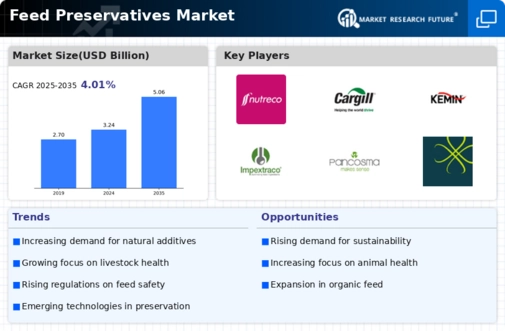
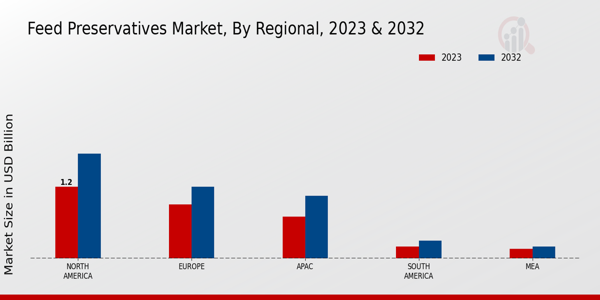
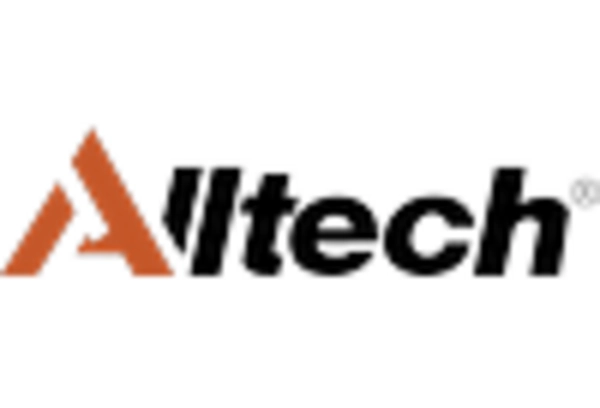

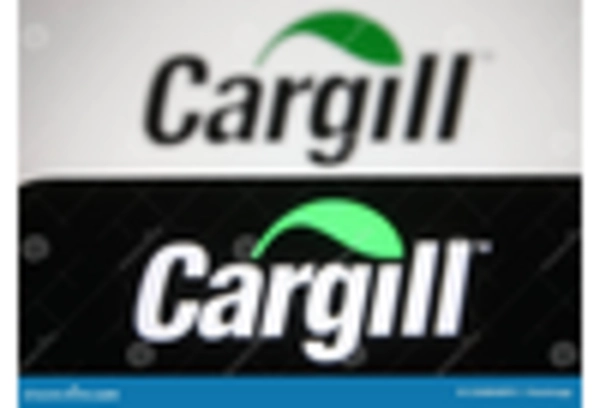

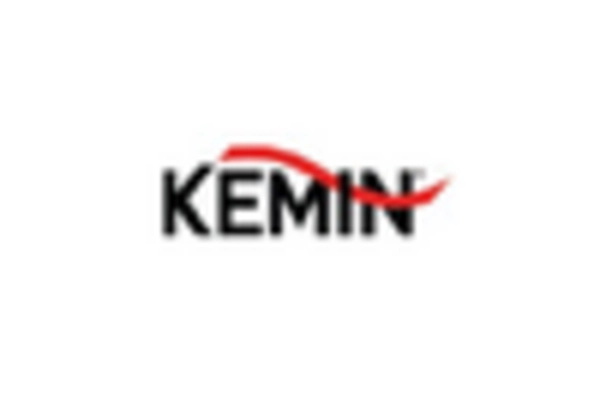
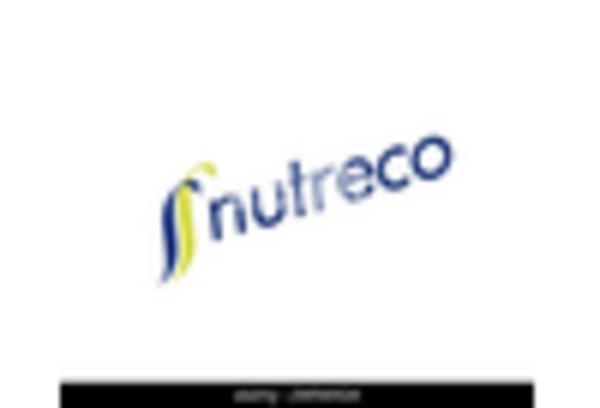

Leave a Comment